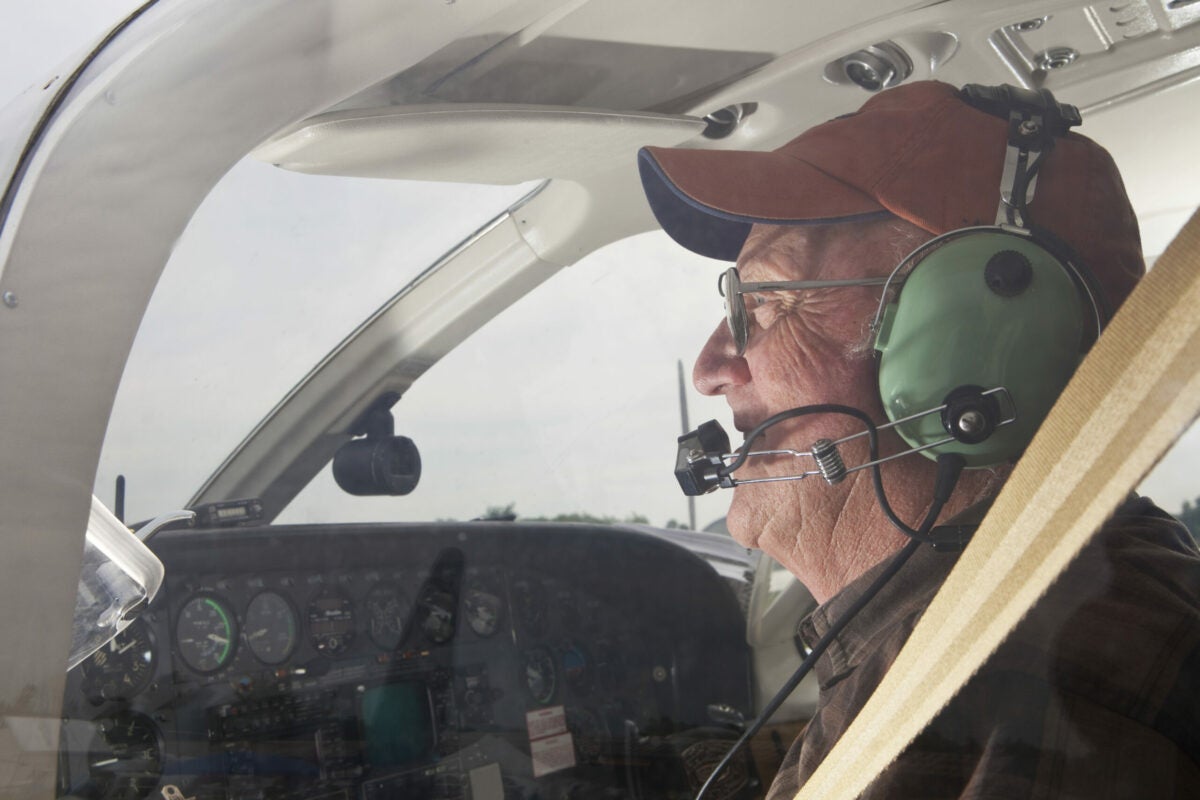“Am I too old to be a private pilot?”
Flight instructors hear this question often. The answer is, as long as you can pass the third-class medical exam, it is doable. There is no maximum age limit for private pilots. However, there is one for airline pilots. The mandatory retirement age for airline pilots as of December 4 is 65. It doesn’t matter if you can still hold a Class 1 medical certificate, you are still healthy enough to hike the Pacific Coast Trail every other year, or you are frequently mistaken for the sibling of your 40-something-year-old child, age 65 is the cutoff.
But there are other professional aviation opportunities, such as on-demand charter operations, that allow their pilots to continue to fly as long as they can still perform and hold the appropriate medical certificate. Mostly, it comes down to whether you have the skills and experience required to get these jobs. Of late, there have been more pilots who have held commercial certificates for years looking to make a career change—from the cubicle farm to the cockpit.
Aviation and a Second Career
I have heard from several over-40, second-career pilot trainees who suggest they have been met with age bias at some flight schools. They walk in, meet the instructors, explain what they want to do, note they have the money to do it and already have most of the hours and a medical certificate, and explain how often they wish to fly (at least twice a week if not more) to reach their goal—the coveted 1,500 hours or whatever the hiring minimums are for where they want to work.
- READ MORE: The Search for Multiengine Time
Sometimes the instructor says they will look at the schedule, and call back, and then…crickets. Often the instructor doesn’t call because they are too busy with pilots already enrolled in the training programs created by the airlines. Unless you have that contract in your hand, your name goes to the bottom of the callback sheet.
Fortunately, there are some flight schools—especially those created by veterans—that have a “no person left behind” mindset. They pride themselves on good client management skills and making sure all their potential customers are heard. If you find one such place, and have a good experience, please spread the word.
Waiting for that callback is particularly painful to the pilots who were on track for or had careers at the airlines in the early 2000s, and when the post-9/11 travel market tanked and they had families to support, they opted for careers outside of aviation. Or perhaps they did make it to the right seat of an airliner, then the airline dissolved, making them look for a different way to support their family.
Either way, you need to get back in the cockpit. You may find having your aviation career move forward is very much like lining up kittens for a photo shoot—you have one in position, and the others are scrambling all over. You may have the money set aside to add the necessary certificate, but you don’t have the ability to take a few weeks off work, or you have the time off work, but the finances are tricky. If you want to use an accelerated program, look for one with a designated pilot examiner (DPE) on staff and find out how long you can expect to have to wait for the check ride.
You may have to relearn airspace, along with ADS-B requirements, and changes to the equipment requirements for commercial pilots. And here is a big one: You no longer have to use a complex aircraft, as a technically advanced aircraft can be used—check the FARs for details.
If building hours means getting the dust off your CFI certificate, make sure you review the current regulations, as it is likely things have changed. For example, the CFI is now required to verify the pilot applicant’s citizenship and place a TSA endorsement into the learner’s logbook.
Also, in most cases, in addition to having an aviation medical certificate made of paper, the trainee pilot is also required to have a student pilot certificate made of plastic. They must apply for it using the Integrated Airman Certification and Rating Application (IACRA) on the computer, and it is easiest when the instructor is face to face with the applicant, as there is a lot of verification of information and the CFI needs to sign the application.
It has been my observation that the aviation career 2.0 candidates are the ones that work very hard to achieve their goals. If the candidate is becoming an instructor, or reactivating their instructor privileges, this dedication is often positively modeled for their learners, who themselves develop a great sense of accomplishment as they gain skills and knowledge—and hopefully share it with future pilots.
